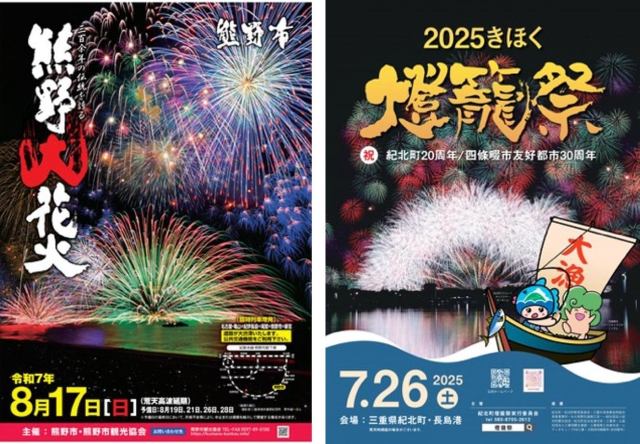
Spectacular fireworks, ancient pilgrimage routes, water excursions, and local cuisine are all definitive reasons to visit Kumano this summer season.
Our team of SoraNews24 writers love visiting off-the-beaten-path locales in Japan. We’ve journeyed to the north, the south, and plenty of places in between, but there will always be more hidden gems waiting to explore.
While we wouldn’t exactly call the UNESCO World Heritage Site “The Sacred Sites and Pilgrimage Routes in the Kii Mountain Range” under the radar, we would venture to say that it can be overshadowed by the popular cities of Kyoto, Nara, and Osaka that are in close proximity. Given the unprecedented numbers of foreign tourists in those cities as of late, if you’re looking for a combination of ancient and modern wonders without the crowds, we’d highly recommend heading a bit farther south to the Kii Peninsula. Today, we’ll be introducing a variety of highlights from the area centered on Kumano, Mie Prefecture, a city nestled snugly between the mountains and the ocean.
First things first–Kumano is home to the Kumano Fireworks Festival (熊野大花火大会), one of the premier displays of fireworks in all of Japan. Held annually, 10,000 fireworks explode 600 meters (656 yards) in the sky over the ocean at Shichirimihama Beach. This year’s festival is slated for August 17 from 7-9 p.m., with backup dates of August 19, 21, 26, and 28 in case of inclement weather or unruly waves.
Similarly, a bit to the north in the town of Kihoku, the Kihoku Lantern Festival (きほく燈籠祭) is celebrating the 20th anniversary of the town’s establishment after two smaller towns were merged. The festival was held on July 26 at Kiinagashima Port with a special decorative lantern float of local mascot characters Kiihokun and Kussun fishing alongside a fireworks display designed to mimic the plumage of a peacock over the ocean. Those who wish to see the decorative lantern are still in luck because it will be displayed at the World Expo that’s currently taking place in Osaka.
▼ Posters for this year’s Kumano Fireworks Festival and Kihoku Lantern Festival

The name “Kumano” may ring a bell if you’ve ever heard of the Kumano Kodo, a series of ancient pilgrimage routes that connect important shrines and temples secluded in the mountains of the Kii Peninsula. Traversed by spiritual pilgrims for over 1,000 years, the old-growth forests practically feel like they’re buzzing with mystical energy.
We’ll introduce two recommendations for must-see stretches of the routes. First, the Matsumoto Pass (松本峠) is located between Kumano’s Odomari and Kinomoto localities and is only about a 30-minute hike from the popular Onigajo (鬼ヶ城) natural rock formations/caves sightseeing attraction. You’ll be rewarded for your uphill climb with sweeping views of the coast and mountains. You should also be on the lookout for a Jizo statue at the summit of the pass riddled with bullet marks from when a hunter mistook it for a monster in centuries past.
▼ A section of the Matsumoto Pass
 © SoraNews24
© SoraNews24
▼ The Jizo statue at the top of the Matsumoto Pass
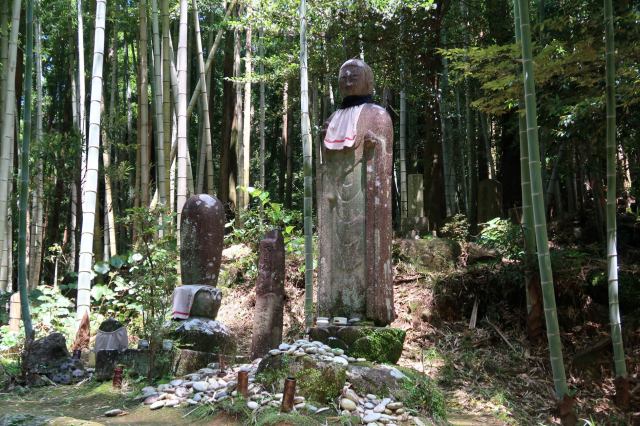
▼ The Onigajo (“Demon Castle”) rocks along the water are well worth a visit before or after visiting Matsumoto Pass.
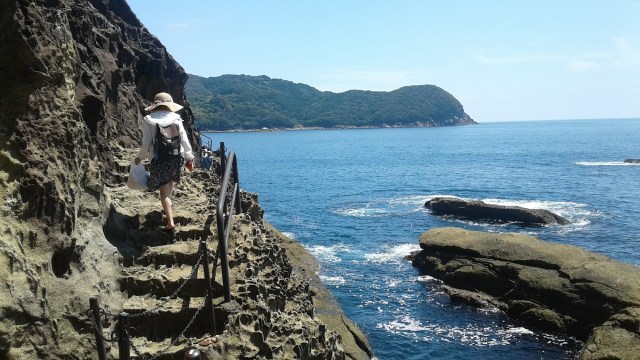 © SoraNews24
© SoraNews24
Second, the Magose Pass (馬越峠) is located between Kihoku and Owase and is fantastic for anyone who wants to be swept up in the tranquility of nature. This stretch of the route is marked by abundant hinoki cypress trees and cobblestone paths, but be careful not to slip as the area receives some of the highest annual rainfall in the country.
▼ A section of the Magose Pass

Meanwhile, if a stroll on the beach is more your style, you’ll have plenty of walking to do at Shichirimihama Beach (七里御浜海岸)–yes, the same place where the Kumano Fireworks Festival takes place. Spanning 22 kilometers (13.7 miles) from Kumano to the town of Kiho to the south, it’s Japan’s longest sand and gravel beach that’s filled with colorful pebbles shaped by the waves. It’s also a landing spot for loggerhead turtles.
▼ Shichirimihama Beach

▼ People who plan to attend the Kumano Fireworks Festival stake out prime sections of the beach for their blankets weeks in advance.
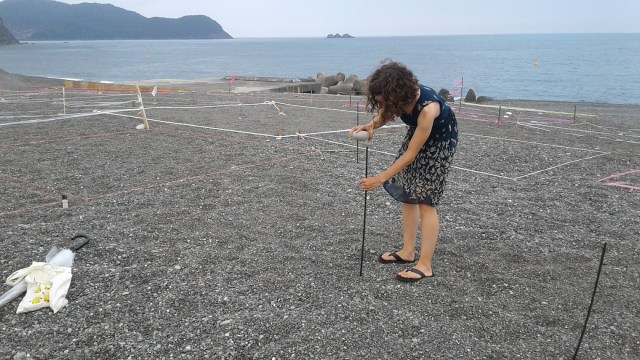 © SoraNews24
© SoraNews24
This next spot holds incredible significance in the mythical history of Japan. Hananoiwaya Shrine (花の窟神社) is said to be one of the oldest (some say the oldest) Shinto shrine in all of Japan. It’s even mentioned in the Nihon Shoki, the second-oldest collection of Japanese historical writings dating to 720 AD. The reason for its importance is that it enshrines Izanami no Mikoto, the mother/creation goddess of Japanese mythology, and the grounds contain a cave that is believed to be Izanami’s grave as well as the entrance to the underworld.
▼ The entrance to the underworld at Hananoiwaya Shrine…?
 © SoraNews24
© SoraNews24
The shrine is also famous for a ritual held twice per year–on February 2 and October 2–called the otsunakakejinji (御綱掛け神事). During these occasions, dances are offered to the gods and then a 170-meter-long shimenawa rope, the longest in all of Japan, is stretched across the shrine grounds and hung between the 45-meter-high sacred rock face marking the entrance to the underworld and a sacred pine tree. It’s a sign of good luck if the rope remains intact until the next otsunakakejinji.
▼ The rope being prepared for the otsunakakejinji

▼ The rope-hanging ritual is depicted in beautiful fashion on Hananoiwaya Shrine’s goshuincho shrine/temple seal record book.
 © SoraNews24
© SoraNews24
By the way, we’d be remiss not to mention the famous Shishiiwa (獅子岩) “Lion’s Head Rock” located on Shichirimihama Beach just a short walk down the road from the entrance to Hananoiwaya Shrine. It makes for an awesome photo op in the background.
▼ The Shishiiwa looks out over the ocean as a protective guardian
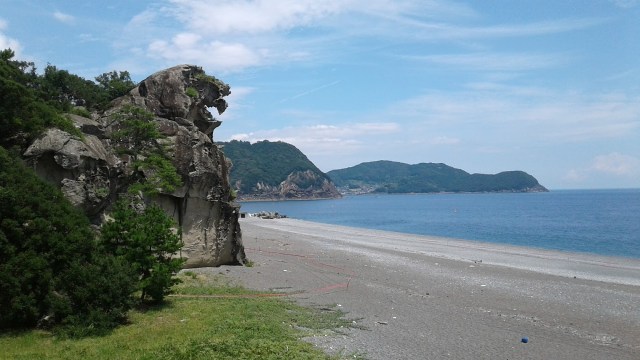 © SoraNews24
© SoraNews24
If you’ve had your fill of culture and are eager to get your feet wet–literally–in some kind of leisure activity, Kumano’s got you covered several times over. First, at the Yume Kodo Owase (夢古道おわせ) bathing facility in Owase, you can relax in a tub with deep sea water pumped from 400 meters below. It’s the only deep-sea water bathing facility and mist sauna on the Kii Peninsula and is renounced for its water’s heat and moisture retention qualities. When you’ve worked up an appetite, there’s an on-site food court with ramen and fried foods made using the deep sea water, as well as locally caught fish on the weekends.
▼ Yume Kodo Owase
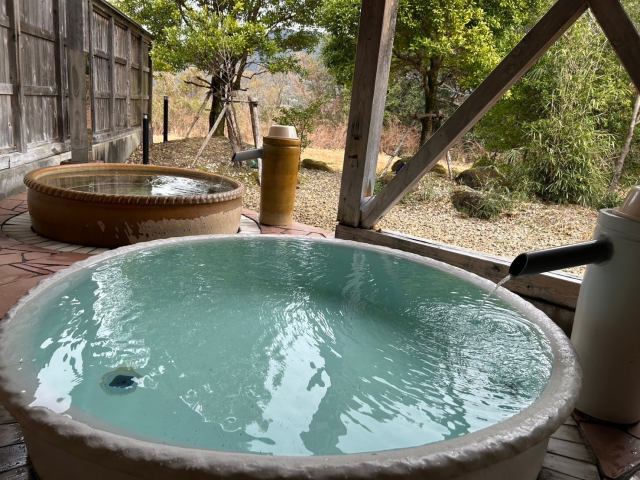
You might also like to dip your toes into the cool basin at the bottom of the 30-meter-tall Hisetsunotaki waterfall in Kiho’s Hisetsunotaki Camping Ground (飛雪の滝キャンプ場). There are also three kinds of tent saunas on the grounds.
▼ Hisetsunotaki Camping Ground

There are also more active options in the form of sea kayak guided night tours at Owase’s Mikisato Beach from June through October. The highlight of these tours is the chance to see large swaths of noctiluca scintillans, a species of bioluminescent marine eukaryotes nicknamed “sea sparkles” that make the sparkling waters appear to blur together with the twinkling of starry skies. June to August tours last from 7:30-9 p.m., while September to October tours last from 7-8:30 p.m.
▼ Sea kayak night tours
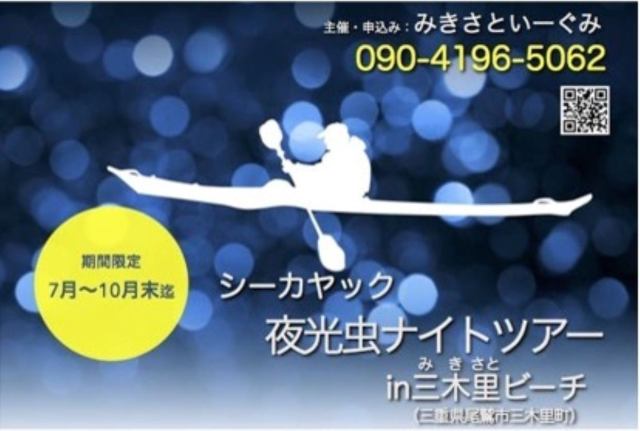
Finally, the Sandanbo Sightseeing Experience (三反帆遊覧体験) is an hour-long cruise down the Kumano River in a traditional boat with three sails. Besides enjoying the beautiful scenery from a unique vantage point, it’s also a chance to follow in the wake of aristocrats of old who visited the Kumano Kodo by water.
▼ Sandanbo Sightseeing Experience
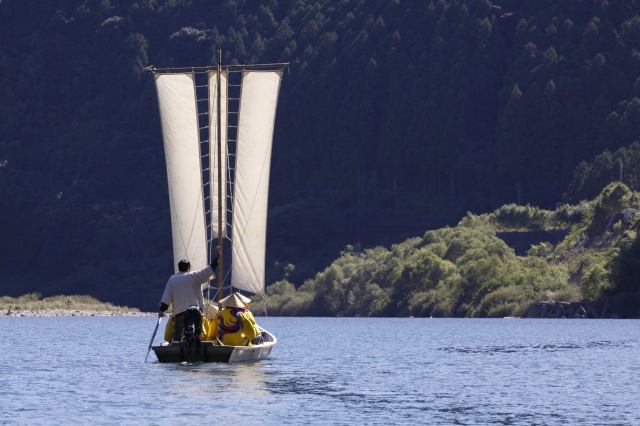
Foodies can now rejoice because we’ve saved your favorite for last. Every region of Japan boasts its own unique local cuisine, and we’ve got four top recommendations for you to sample the gastronomic delights of the Kumano area.
The Michi no Eki Kii-Nagashima Manbo (道の駅 紀伊長島マンボウ) roadside stop in Kihoku has some unique seafood offerings for you to try, including Pacific saury sushi, fried ocean sunfish skewers, shark skewers, and fried moray eel.
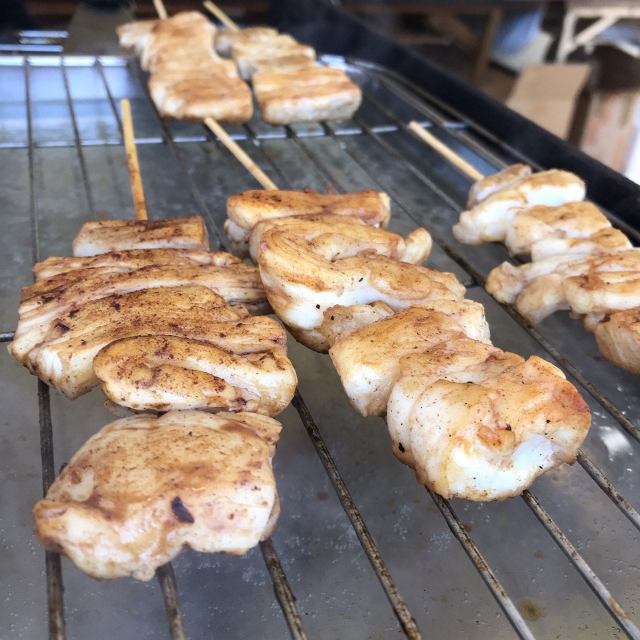
Mehari sushi (めはり寿司) is a famous local specialty of the region found in various places. It consists of a rice ball wrapped in pickled leaf mustard (takana) greens that packs a flavorful punch.

The town of Mihama, located on the coast between Kumano and Kiho, is famous for being Japan’s biggest producer of mikan by growing 200,000 kilograms (220 tons) of them per year. However, the area also produces lots of Meyer lemons (マイヤーレモン), a natural hybrid fruit that’s juicy and well-suited for use in sweets. Better pucker up!

Finally, you may be tempted to think that Kumano’s most famous for seafood, but that’s certainly not all. There are several brand meats that are well-known to the area as well. Pictured below clockwise from the upper-left corner are:
● Mikumano beef (美熊野牛)–The cows are raised on high land overlooking the ocean.
● Kumanojidori chicken (熊野地鶏)–This chicken is a cross between the Mie shamo yagido, Iseakadori, and Nagoya Cochin varieties of fowl.
● Iwashimizu pork (石清水豚)–The pork is named after the pure spring water that flows from the local mountains.

There you have it–plenty of reasons to make the Kumano region your go-to destination for your next Japan travels. With summer festivals in full swing across all of Japan at the moment, we encourage you to get out there, explore, and experience everything that this season has to offer.
Source: PR Times
Images: PR Times, SoraNews24
● Want to hear about SoraNews24’s latest articles as soon as they’re published? Follow us on Facebook and Twitter!






